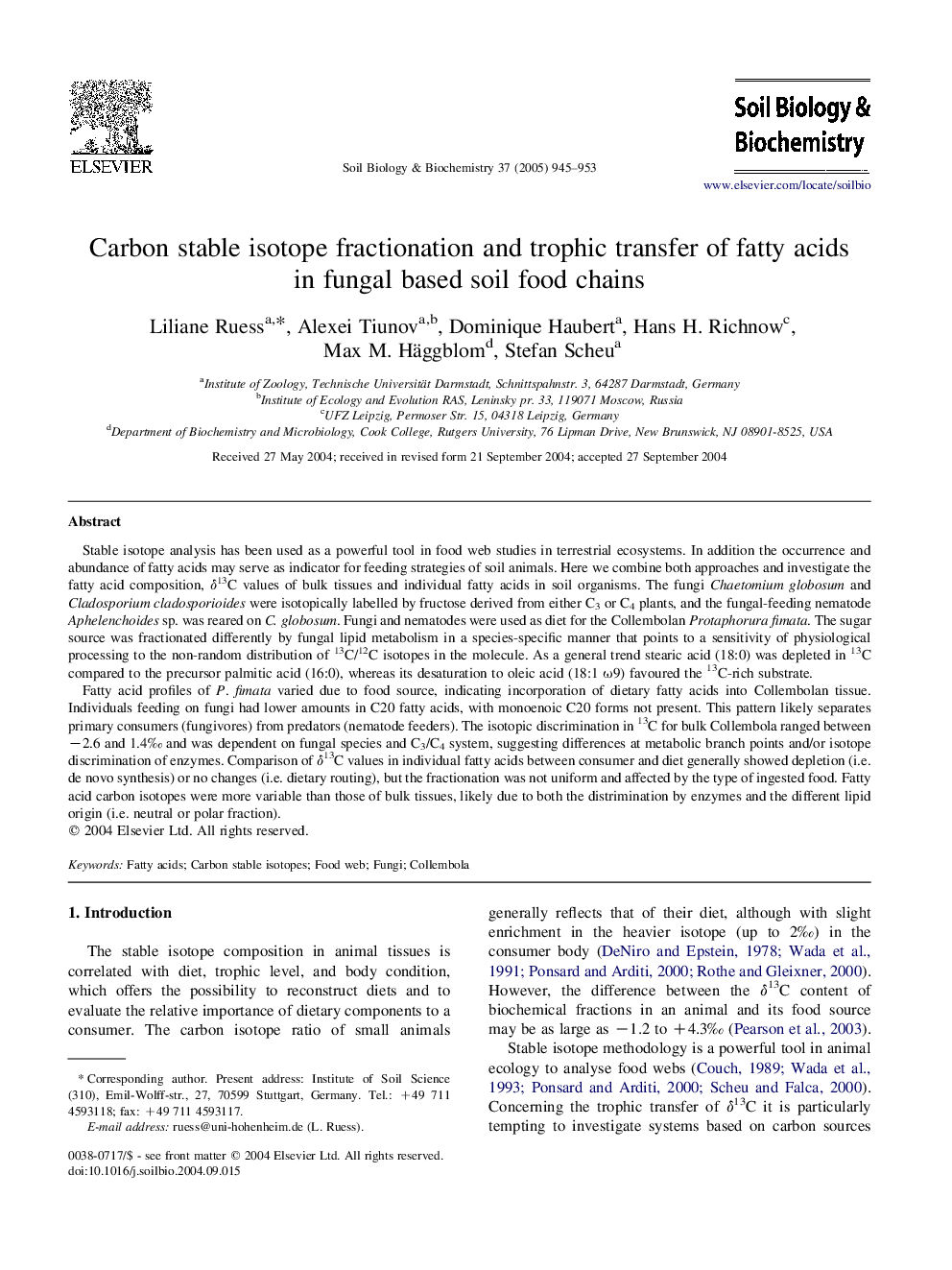| Article ID | Journal | Published Year | Pages | File Type |
|---|---|---|---|---|
| 10847179 | Soil Biology and Biochemistry | 2005 | 9 Pages |
Abstract
Fatty acid profiles of P. fimata varied due to food source, indicating incorporation of dietary fatty acids into Collembolan tissue. Individuals feeding on fungi had lower amounts in C20 fatty acids, with monoenoic C20 forms not present. This pattern likely separates primary consumers (fungivores) from predators (nematode feeders). The isotopic discrimination in 13C for bulk Collembola ranged between â2.6 and 1.4â° and was dependent on fungal species and C3/C4 system, suggesting differences at metabolic branch points and/or isotope discrimination of enzymes. Comparison of δ13C values in individual fatty acids between consumer and diet generally showed depletion (i.e. de novo synthesis) or no changes (i.e. dietary routing), but the fractionation was not uniform and affected by the type of ingested food. Fatty acid carbon isotopes were more variable than those of bulk tissues, likely due to both the distrimination by enzymes and the different lipid origin (i.e. neutral or polar fraction).
Related Topics
Life Sciences
Agricultural and Biological Sciences
Soil Science
Authors
Liliane Ruess, Alexei Tiunov, Dominique Haubert, Hans H. Richnow, Max M. Häggblom, Stefan Scheu,
